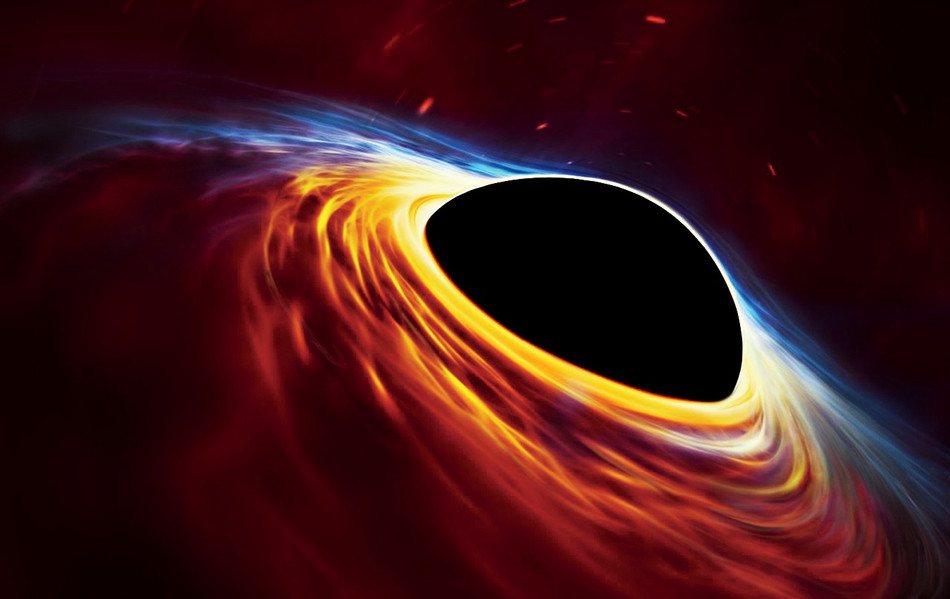One remarkable prediction of Albert Einstein’s theory of general relativity — the theory that explains the relationship between space, time, and gravity — is that rotating black holes have enormous amounts of energy available to be tapped.
Over the years, eminent scientists such as Roger Penrose and the late Stephen Hawking have proposed mathematically sophisticated, if somewhat fanciful, ideas for how humans could conceivably unleash this power one day.
Now, in a study published in the journal Physical Review D, Columbia physicist Luca Comisso and his colleague Felipe Asenjo of the Universidad Adolfo Ibáñez in Chile have offered their own take on black-hole energy extraction, theorizing that naturally occurring disturbances in magnetic fields that surround black holes may periodically generate clouds of high-energy plasma particles that could be harvested by spaceships.
“Thousands or millions of years from now, humanity might be able to survive around a black hole without drawing energy from stars,” says Comisso. “It is essentially a technological problem. If we look at the physics, there is nothing that prevents it.”
Of course, getting anywhere near a black hole is a pretty significant technological problem in itself, since the closest one to Earth is more than a thousand light years away, in the star system QV Telescopii. But even if our descendants never manage to travel that far, Comisso and Asenjo’s latest work could still prove scientifically valuable, since it also suggests that magnetic changes — specifically, the disconnection and reconnection of magnetic-field lines on the perimeters of black holes — may explain mysterious bursts of radiation that astronomers have previously observed in deep space.
“Our increased knowledge of how magnetic reconnection occurs in the vicinity of black holes might be crucial for guiding our interpretation of current and future telescope observations,” Asenjo says.



